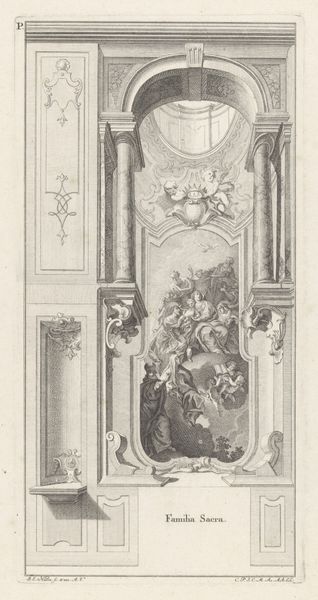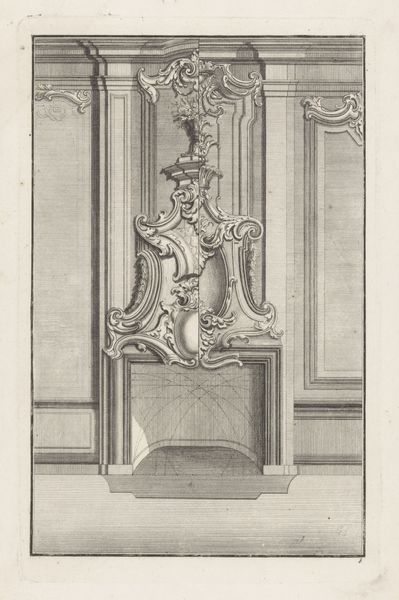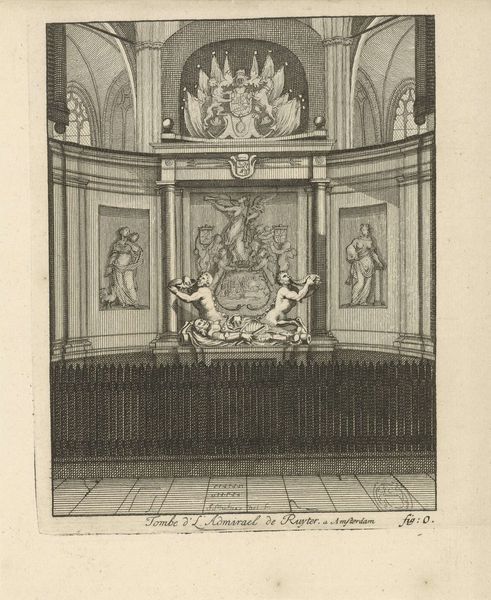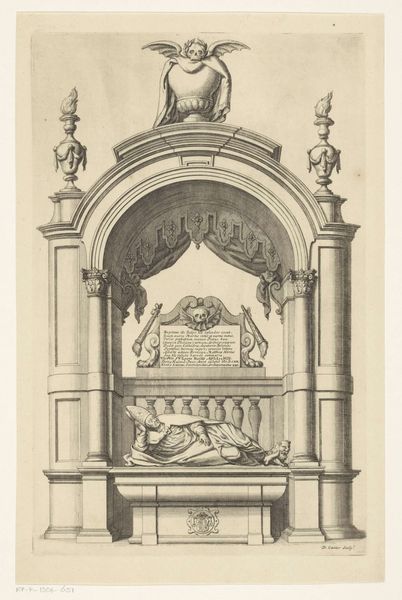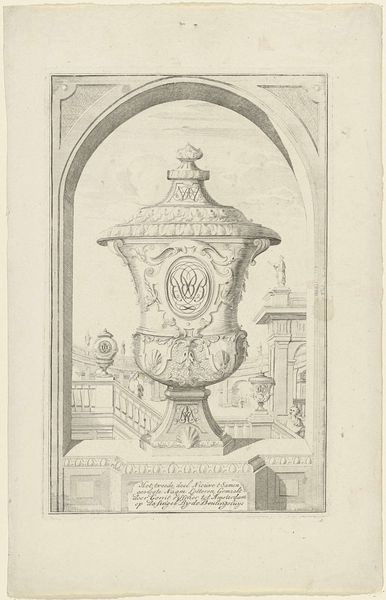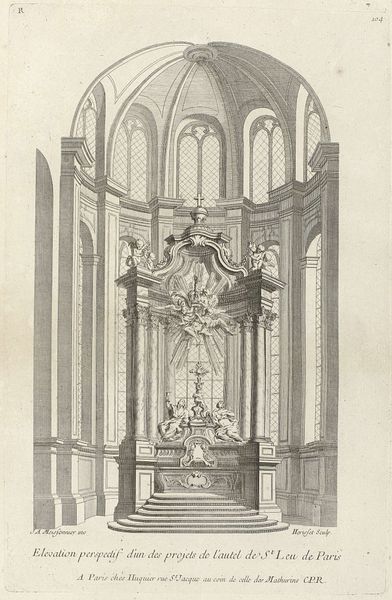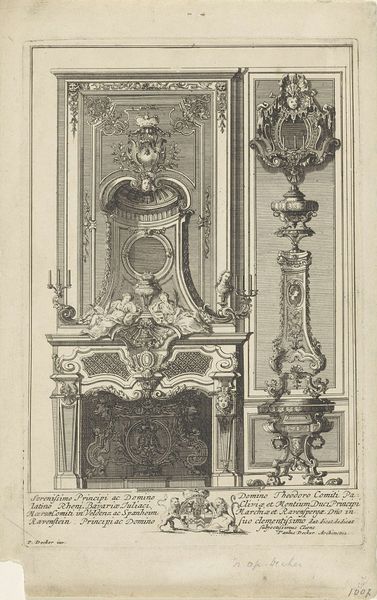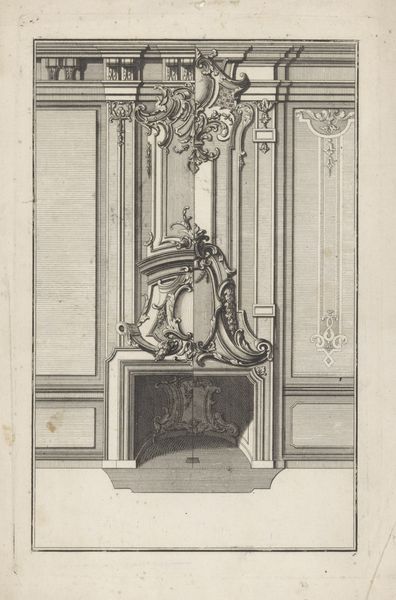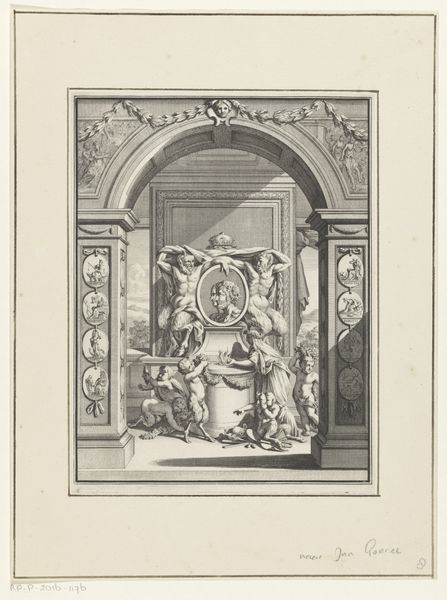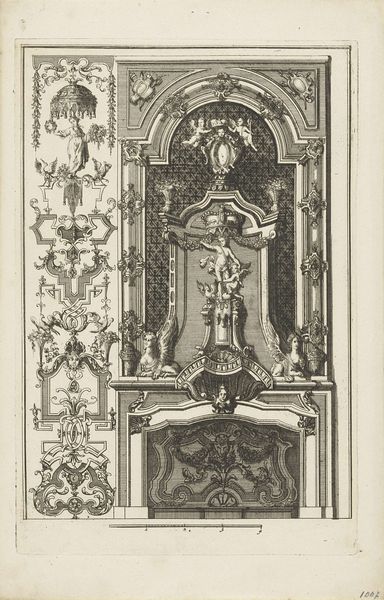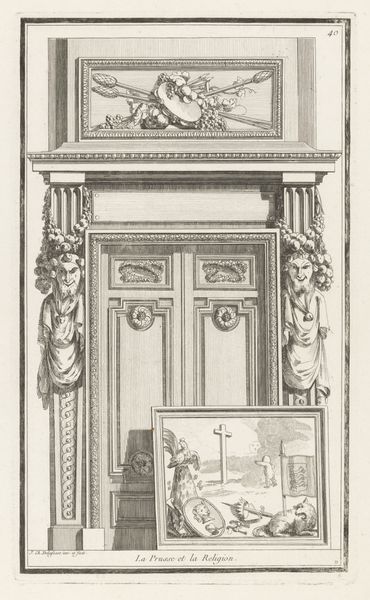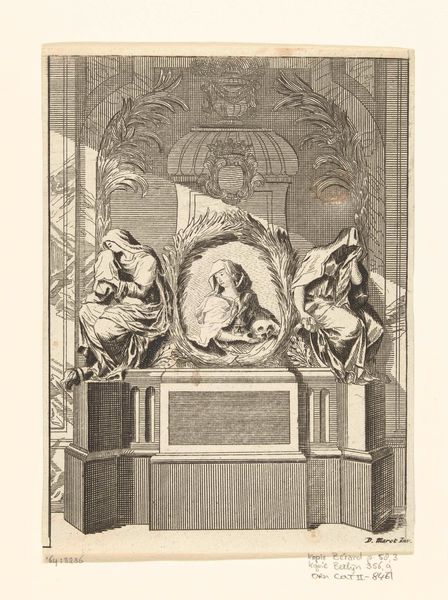
engraving, architecture
#
allegory
#
baroque
#
figuration
#
form
#
line
#
history-painting
#
engraving
#
architecture
Dimensions: height 448 mm, width 294 mm
Copyright: Rijks Museum: Open Domain
This is John Ingram’s design for a tomb monument, made around 1753, using etching. Notice how the composition is structured by a series of vertical and arched forms that draw the eye upwards. The monument itself, flanked by classical columns, is topped by cherubic figures, all framed by a grand arched window. Ingram orchestrates a play of light and shadow using the etched lines to create depth and texture. The rigid geometry of the window contrasts with the flowing, curvilinear forms of the sculptures. This interplay highlights a semiotic tension between earthly permanence, represented by the solid monument, and spiritual transcendence, suggested by the ethereal figures and the light beyond the window. Ultimately, the etching’s structure prompts us to consider the monument as a space where earthly and heavenly realms converge, creating meaning through symbolic forms.
Comments
No comments
Be the first to comment and join the conversation on the ultimate creative platform.

